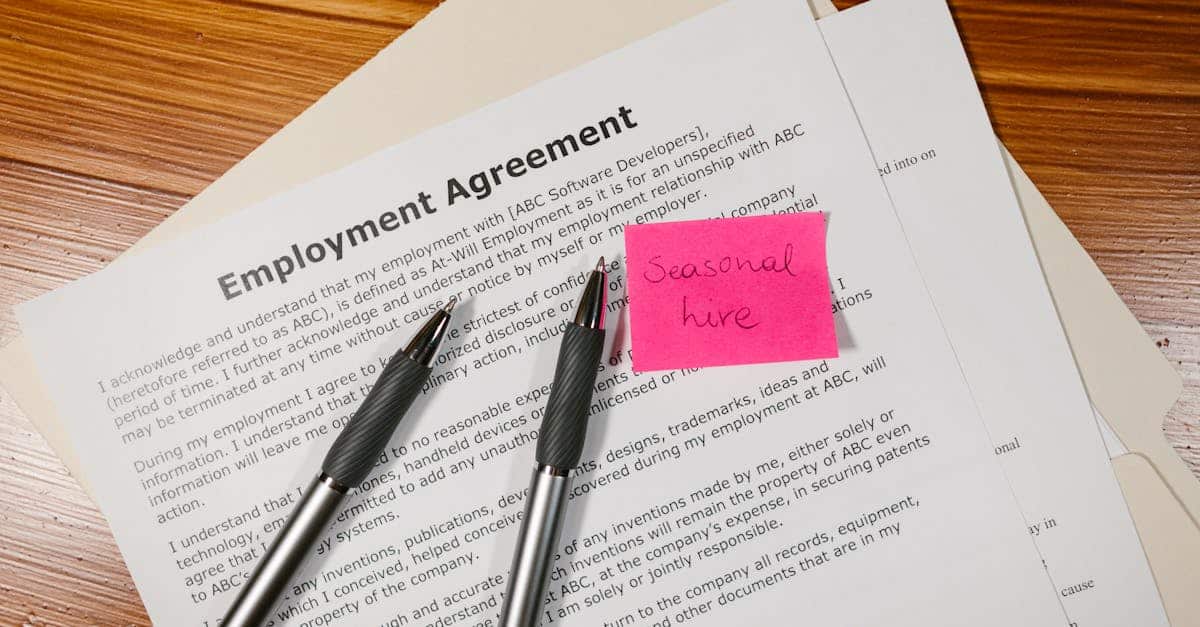
Introduction
The first month determines whether a new hire becomes a productive team member — or an early attrition statistic. Too often manual paperwork, missed IT access, and one-off follow-ups create friction, compliance risk, and an inconsistent experience. Document automation — auto-generated offer and appointment letters, pre-filled tax and policy forms, and rule-based triggers — removes these bottlenecks and hands HR a predictable, auditable path to get people ready on day one.
This 30-day checklist breaks HR onboarding into seven practical, template-driven workflows — from preboarding and day‑0 tasks through weeks 2–4, plus reusable templates, conditional triggers, and the KPIs you should track. Read on to get the exact automations and short templates you can plug into your HR systems to cut new‑hire friction and speed time‑to‑productivity.
Preboarding automation: auto‑generate offer letters, appointment letters and required forms
Automate the first impression. Use HR onboarding software to auto-generate personalized offer letters and appointment letters as soon as a candidate accepts. This reduces manual work and speeds the new hire onboarding process while keeping documents compliant and consistent.
What to automate
- Offer letters: Populate role, pay, start date and contingencies from your Applicant Tracking System — then auto-send. (Example template: job offer letter.)
- Appointment letters: Generate position-specific appointment letters and acceptance receipts. (Use: appointment letter.)
- Required forms: Tax forms, direct deposit, NDAs and policy acknowledgements pre-filled and ready for e-signature.
Why this matters: automating these steps shortens the hr onboarding checklist, improves accuracy, and triggers downstream workflows (IT, payroll, benefits) immediately after acceptance.
Day‑0 to Day‑7 essentials: automated I‑9/verification, benefits enrollment and signatures
First week priorities: focus on legal verification, benefits setup, payroll, and basic compliance training so new hires can start with confidence.
Core tasks to automate
- I-9 / identity verification: Automate reminders, document capture and verification steps to meet compliance windows.
- Employment verification: Auto-generate verification letters or confirmations as needed (see: employment verification letter).
- Benefits enrollment: Push benefits packets, enrollment deadlines and auto-reminders to ensure timely sign-up.
- Signatures and policies: E-sign employee handbook, policies and consent forms with automated follow-ups for unsigned items.
Best practices: include an hr onboarding checklist that surfaces incomplete items (hr onboarding checklist) and use onboarding software to centralize completion rates and timestamps for auditability.
Week 2: role‑specific training, microlearning certificates and task assignments
By week two, focus on job enablement: role-specific training, initial projects, and bite-sized learning that builds momentum.
Designing the learning flow
- Role-specific curricula: Assign training modules tied to role capabilities and required certifications.
- Microlearning: Short, focused lessons increase completion rates and knowledge retention; automate delivery on a daily schedule.
- Certificates and badges: Auto-issue microlearning certificates or achievement documents when modules are completed (example: achievement certificate).
- Task assignment: Assign small, measurable tasks with due dates and manager approvals to map progress against the hr onboarding process.
Tools and metrics: use onboarding automation tools to track completion and time-to-complete; embed the hr onboarding template for role checklists to standardize experience.
Week 3: probation checkpoints, automated performance appraisal reminders and manager approvals
Week three is a natural moment for a probation checkpoint and early performance calibration.
Checkpoint workflow
- Automated reminders: Send probation review reminders to managers and new hires with pre-populated forms.
- Performance appraisal templates: Use structured appraisal forms and send automated escalation for missing approvals (see: performance appraisal).
- Manager approvals: Implement a one-click approval and feedback loop so managers can sign off on progress or request targeted development.
HR onboarding best practices: connect these checkpoints to your onboarding checklist and recording system so every probation outcome, feedback note and follow-up task is captured in the employee record.
Week 4: equipment, IT access provisioning and automated asset receipts
By week four, new hires should have the equipment and access they need to be fully productive. Automate provisioning to avoid delays.
Operational items to automate
- IT access provisioning: Trigger account creation, SSO setup and group memberships based on job role.
- Equipment orders: Auto-submit hardware/software requests to purchasing or IT when the offer is accepted.
- Asset receipts: Generate automated asset receipt forms and require e-signature upon delivery to close the loop.
Why this reduces churn: timely access and properly configured equipment directly affect the employee onboarding experience and retention through onboarding — reducing frustration and speeding time-to-productivity.
Templates, triggers and reminders: building repeatable workflows with conditional logic
Reusable templates and conditional triggers are the backbone of scale. They turn ad-hoc tasks into predictable, auditable workflows.
How to structure templates
- Standard templates: Create templates for offer letters, appointment letters and onboarding forms that pull dynamic fields (use your hr onboarding template and onboarding checklist as a base).
- Conditional logic: Branch workflows by role, location, employment type or visa status so only relevant tasks are triggered.
- Reminder schedules: Set escalating reminders and conditional due dates — for example, send manager reminders if the new hire hasn’t completed day‑0 tasks within 48 hours.
Integration points: connect onboarding software with HRIS, ITSM and payroll so triggers create tickets and populate records automatically. This reduces manual handoffs and keeps the hr onboarding process auditable and consistent.
Measuring success: key KPIs to track (time‑to‑productivity, completion rates, retention)
Measure onboarding with a small set of clear KPIs that tie activity to outcomes.
Essential KPIs
- Time-to-productivity: Weeks or days until a new hire completes core milestones or contributes to measurable outputs.
- Completion rates: Percentage of new hires who finish required forms, training modules, and benefits enrollment within target windows.
- Retention and early attrition: 30/90/180-day retention rates to assess whether onboarding impacted staying power.
- Engagement & NPS: New hire surveys and net promoter scores for the onboarding experience.
Reporting and benchmarks: Use onboarding software to automate collection of these metrics and compare against industry or company benchmarks. Tie metrics back to your templates and triggers so you can iterate — e.g., lower completion rates might indicate a need for clearer checklists or onboarding automation tools.
Summary
Over the first 30 days, the seven template-driven workflows — preboarding, day‑0 essentials, week‑2 role training, week‑3 probation checks, week‑4 provisioning, reusable templates/triggers, and KPI tracking — give HR a predictable, auditable path to get people ready and productive during HR onboarding. Document automation removes manual handoffs, reduces compliance risk, and creates consistent, traceable records that both HR and legal teams can rely on. Implement these automations to shorten time‑to‑productivity, raise completion rates, and lower early attrition; to get started with plug‑and‑play templates and workflows, visit https://formtify.app.
FAQs
What is HR onboarding?
HR onboarding is the structured process that brings a new hire from acceptance to full productivity, covering paperwork, training, access provisioning, and cultural integration. It combines administrative compliance (tax forms, I‑9s, benefits) with role-specific enablement to reduce early churn and accelerate contribution.
How long should onboarding last?
Onboarding length varies by role and industry, but most programs extend beyond a single day or week; the first 30 days are critical for setup and early training, while 60–90 days capture performance calibration and deeper integration. Treat the first month as the operational foundation and use the following months to broaden responsibilities and measure progress.
What should be included in an onboarding checklist?
An effective checklist covers preboarding (offer letters, signed agreements), day‑0 tasks (I‑9, payroll, benefits), access and equipment provisioning, role‑specific training modules, probation checkpoints, and manager approvals. Include automated reminders, e‑signatures, and timestamps so completion is auditable and visible to stakeholders.
How do you measure onboarding success?
Measure onboarding with a few focused KPIs: time‑to‑productivity, completion rates for required forms and training, and early retention (30/90/180‑day). Supplement these with new‑hire engagement surveys or NPS to capture qualitative feedback and tie results back to specific templates or workflow steps.
What is the difference between onboarding and orientation?
Orientation is a short, administrative introduction that typically covers paperwork, company policies, and immediate logistics. Onboarding is broader and ongoing, encompassing role training, cultural assimilation, performance checkpoints, and the systems and workflows that make a new hire productive over weeks and months.





